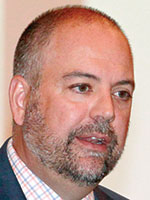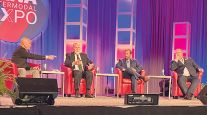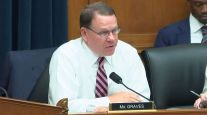Spending on Trucking Services Soars in Fourth Quarter

Spending on trucking services advanced by their highest rates this decade in the fourth quarter of 2017, spurred by demand and tight capacity, according to the U.S. Bank Freight Payments Index, a quarterly measure of quantitative changes in freight shipment and spending activity tracked on a national and regional level.
The Minneapolis-based bank uses data from the $23 billion in freight payments it processes annually for large corporations and government agencies to create two indexes: the National Spending Index and the National Shipments Index.
The National Spending Index had a value of 185.2 at the end of the fourth quarter, a rise of 12.5% from the third quarter and a jump of nearly 25% from the fourth quarter a year ago. The two increases represent record moves for the index going back to 2010.

Costello
“Strength in spending can be traced in part to solid demand, but also to a driver shortage accentuated by the new federal requirement that trucks be equipped with electronic logging devices, or ELDs, to track driver hours-of-service, which took effect in December,” said American Trucking Associations Chief Economist Bob Costello, who provides quarterly analysis on the index results.
Freight spending was higher in all regions of the country, with the Northeast rising 16%, the Midwest 13.2%, the Southwest 12.8%, the West 11.8%, and the Southeast by 10.8%.
The National Shipments Index rose 1.6% to end the fourth quarter with a value of 135.2. The increase was down from the 5.8% and 3.3% gains recorded in the second and third quarters, respectively. The steady rise represents good consumer spending, improved manufacturing activity and decent construction activity, the bank reported.
“The growth in shipments for the fourth quarter was solid, just not quite the torrid pace of the previous two quarters,” Costello said. “This matches with the broader economic picture, where gross domestic product is expected to show a slowing down for Q4.”




